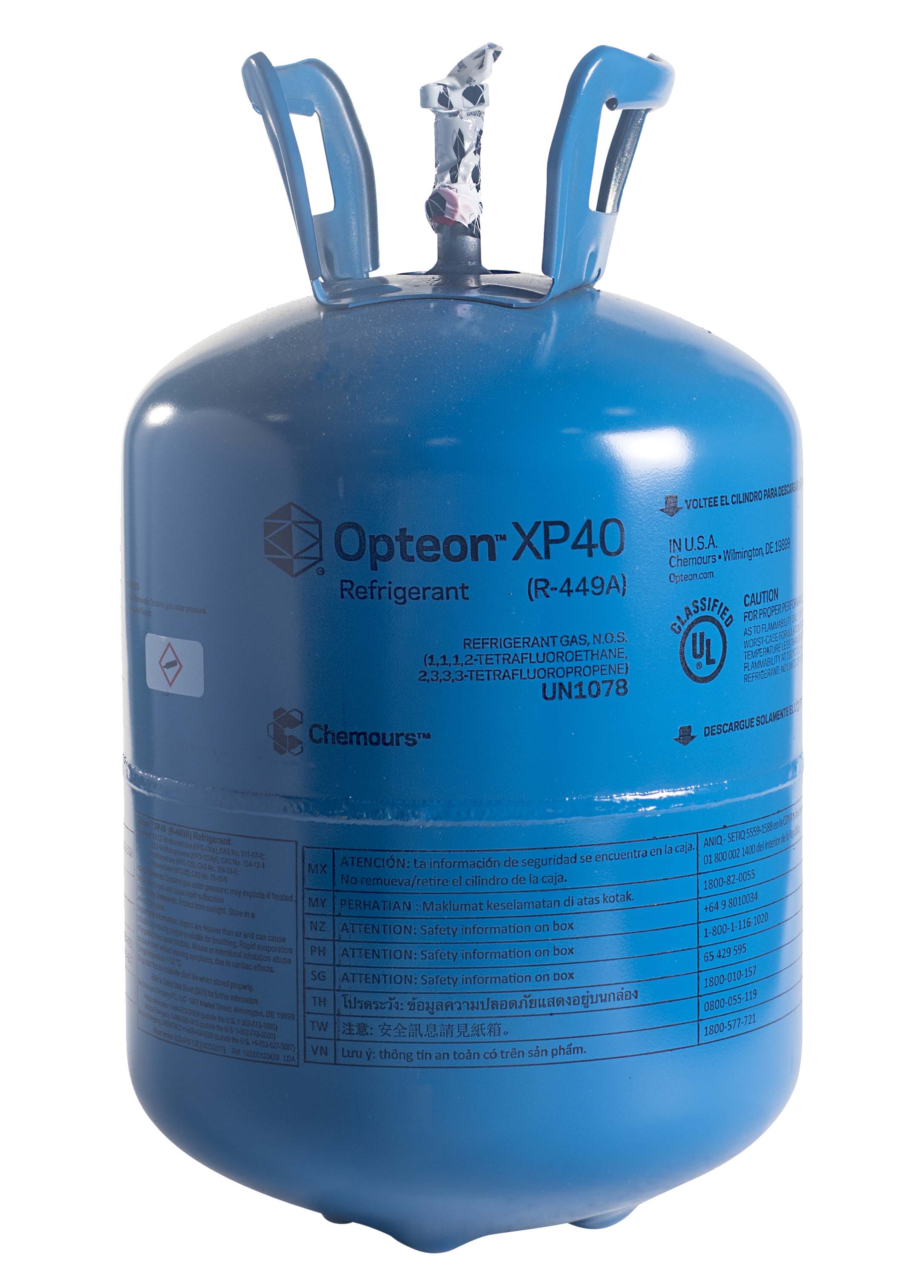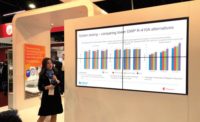At the AHR Expo this year, Chemours highlighted its 90+-year journey of refrigerant innovation, starting with Freon and building up to the Chemours Opteon portfolio, which offers the HVACR industry solutions to meet the needs of today and tomorrow, including new alternatives that are non-ODP and low-GWP.

REGULATORY LANDSCAPE: Chemours’ Brandon Marshall gave a presentation at the AHR Expo about the current regulatory landscape of refrigerants. (Staff photo)
“The AHR Expo is the largest gathering of HVACR industry professionals in North America, and having a 90+ year history in the market, Chemours felt it was important for us to share our expertise on refrigerants, regulations, and the applications we serve,” said Brandon Marshall, North America marketing manager-thermal and specialized solutions, Chemours. “Chemours has always been in the center of the HVACR community, and the opportunity to network with old friends and new faces is one we have missed as we combat COVID-19. With 2022, we are looking forward to being able to participate in events such as the AHR Expo again.”
Low-GWP Solutions
At its booth this year, Chemours focused on Opteon XP and XL Series refrigerants, which can be used for a multitude of applications. These include products such as Opteon XL10 (R-1234yf), XL20 (R-454C), XL40 (R-454A), and XL41(R-454B), as well as Opteon XP10 (R-513A) and XP40 (R-449A). Opteon XP40 and XP10 were commercialized in Europe and North America in 2014 and 2015, respectively, and are being used in thousands of systems worldwide.

USED GLOBALLY: For commercial/industrial refrigeration retrofits, Opteon XP40 (R-449A) has been used globally to help end users move away from products such as R-404A. (Courtesy of Chemours)
By participating in the AHR Expo, Chemours hoped to bring awareness to the AIM Act and how the HFC phasedown will take place in the U.S., said Alisha Bellezza, president of thermal and specialized solutions at Chemours.
“We anticipate helping customers and their customers understand what the AIM Act means and why our XL and XP lines are going to become so much more important for them. They also need to understand that while it's a different product, it's hitting the same theme: It has great performance, it's very safe, and effective.”
Both Opteon XP and Opteon XL Series refrigerants have been available in Europe for many years, supporting the industry as it has progressed through its HFC phasedown. Opteon XL products have only been introduced in the U.S. market for sampling to equipment manufacturers, but now with the AIM Act in place and the beginning of the HFC phasedown, these products will become more widely available.
“As the U.S. market begins the phasedown of high-GWP HFCs such as R-404A, R-410A, and R-134a, the need for lower-GWP new equipment and retrofit solutions will be prevalent,” said Marshall. “Our Opteon XP and Opteon XL Series of refrigerants are the optimum solutions to meet these needs.”
For commercial/industrial refrigeration retrofits, Opteon XP40 (R-449A) has been used globally to help end users move away from products such as R-404A. With an A1 safety designation, a 64% reduction in GWP when compared to R-404A, and a 5% to 12% energy benefit for systems that are optimized and recommissioned during the retrofit process, XP40 has quickly grown in popularity, said Marshall. Additionally, due to the close performance match to R-404A, Opteon XP40 typically requires fewer component changes, limiting challenges and downtime during the retrofit process.
For new and retrofit applications, Opteon XP10 (R-513A) is another low-GWP solution that features a 55% reduction in GWP when compared to R-134a and closely matches its performance. With an A1 safety classification, Opteon XP10 is designed for medium-temperature applications, including cascade style systems, chillers, and booster system architectures.
“Looking towards the future, the need for even lower GWP and higher performing solutions in new equipment will be prevalent, especially when considering the AIM Act and meeting the U.S. climate objectives,” said Marshall. “Opteon XL solutions are here to meet the need and are available now for equipment manufactures to begin testing and designing next-generation products.”

R-410A REPLACEMENT: Opteon XL41 (R-454B) is a replacement for R-410A in new stationary air conditioning applications that features a GWP of 466. (Courtesy of Chemours)
Four of these next-generation products, which have an A2L safety classification, were highlighted in the booth. These include Opteon XL41 (R-454B), which is a replacement for R-410A in new stationary air conditioning applications that features a GWP of 466 and is a close match to R-410A performance. For commercial refrigeration, Opteon XL40, XL20, and XL10 feature GWP values of 238, 148, and 4, respectively. These A2L solutions, which can only be used in new equipment, not only ensure on par or improved performance compared to R-404A and R-134a, but grant users the confidence that they are compliant with the strictest local and global regulations, said Marshall.
In addition to its new refrigerants, Chemours highlighted the other services it provides, including lab support to test new Opteon XL solutions, product training, regulatory insights, and support for evaluating retrofits.
Looking Ahead
There is no question that the last several years have been tough for the HVACR industry, whether due to supply chain issues, COVID-19, or labor shortages, said Marshall.
“In 2022, we all hope to see some semblance of normalcy, however, we need to plan and remain vigilant to ensure our communities, team members, and families remain safe as we continue to combat the pandemic,” he said. “Other than COVID-19-related challenges, companies need to be keen on participating and staying engaged with the industry as we broach the HFC phasedown and how it may impact their business today and tomorrow.”
While everyone may be concerned about the supply chain right now, that is a short-term consideration, said Bellezza. “It’s not going to take too long before we start to think about 2024 — and the next big HFC production cut just being around the corner. That’s why we're proud of the investments we've made on innovation and being able to meet those timelines. We have the products, technology, support, and expertise to help make this a smooth transition for our customers.”
Now that the HFC phasedown is in effect, it will be important to ensure that all community members — from end users through manufacturers — understand the implications and solutions available to meet their needs, said Marshall.
“The HVACR industry is well versed in managing regulatory changes, and education is the key to ensuring the industry is collaborating and driving towards a common goal,” he said. “An orderly phasedown of HFCs requires us all to participate.”






![[EMERSON PARTY 01-30-22 JT 2] [EMERSON PARTY 01-30-22 JT 2]](https://www.achrnews.com/ext/resources/2022/01-January/EMERSON-PARTY-01-30-22-JT-2.jpg?height=200&t=1643610881&width=200)

